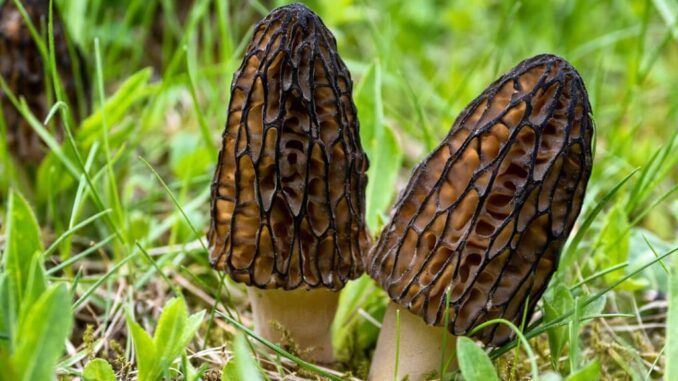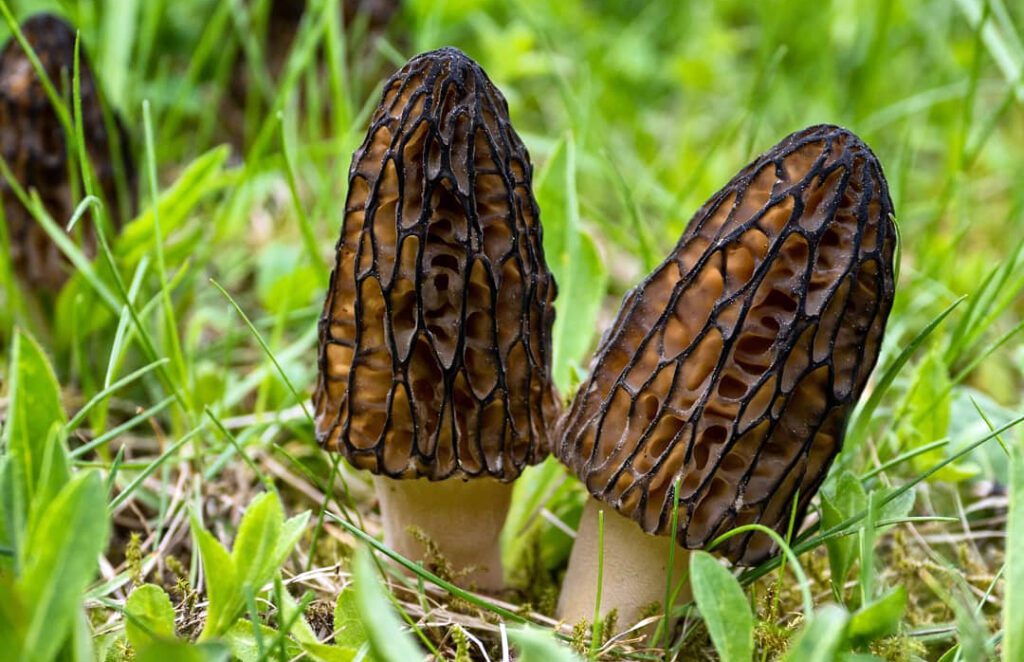
As you know, we have already written many articles on morels! But today, we are going to focus on the habitat of the black morel! Learn how to find the black morel in this article!
Discover all the secrets of its habitat!

Are Black Morels Rare?
If we had to rank the morels in order, the black morel would come at the top! The black morel is arguably the best morel you can find!
Its prestige comes first of all from its rarity! It is much more difficult to find than the common morel, because its habitat is complex! And as we will see, it often grows in association with multiple trees which are not always easy to understand!
In addition, its taste is much finer and a little different from the white morel. Indeed, as it has a tendency to grow in association with certain conifers, it will naturally take on a pronounced taste of fir or spruce which will make it all the better!
In short, the black morel is the Holy Grail for the morel picker!
If you want to know directly the best areas to find black morels, see our Morel Mushroom Maps, available here.
Where To Find The Black Morel?
The Perfect Soil For The Black Morel
Keep in mind that the black morel thrives in calcareous soils! However, a pH level above 7 is not a requirement for locating it in its habitat, despite common belief. Through our extensive research and observations, we’ve discovered that the black morel can thrive in soils with a pH as low as 5.5! This suggests a tolerance for slightly acidic conditions.
Nonetheless, for optimal success in finding the black morel, we still suggest focusing on neutral to alkaline terrains.
To make sure you’re on the right type of soil, avoid ground that has a lot of acid-loving plants like ferns. And favor land with calcareous plants such as wintercress, field garlic, chickweed, wild asparagus…
Mixed Forests For Black Morels
The black morel is difficult to find, because its association with trees is more complex to understand. Indeed, if we take the example of the common morel, this one is easier to find, it is often enough to look under ash and elms. (although many other trees may do the trick)
The black morel is very often associated with conifers! But it’s not that simple! Indeed, the black morel seems to particularly appreciate certain associations of conifers and deciduous trees. The list is not exhaustive, but mixtures based on conifers (spruce, fir & larch) and hardwoods (ash, etc.) are particularly effective!
On the other hand, not all conifers do the trick! Some conifers are less interesting for the morel, such as pines, Douglas fir or cypress trees. No need to spend too much time under these conifers.
The Perfect Elevation
The black morel can be found at all elevations, even very high in the mountains! However, if you want to increase your chances, do not hesitate to look for it in the middle mountains rather than going to the plains where you will have less chance of finding it.
The fact that this one grows rather in high elevation is only the consequence of its affection for conifers! Indeed, the conifers that we have mentioned (spruce, fir, larch, etc.) are rather high-altitude trees. No wonder in these conditions to find the black morel at altitude!
Black Morel Season
The black morel can be discovered as early as the beginning of the season (early March) and can persist until the end of June, especially at higher altitudes. Of course, it’s essential to study the particulars of each state, as the variations can be significant.
Find Out Where Black Morels Are Found In Your Area!
Want to know the best black morel areas near you? Access our Morel Mushroom Maps. You only live once!
Leave a Reply